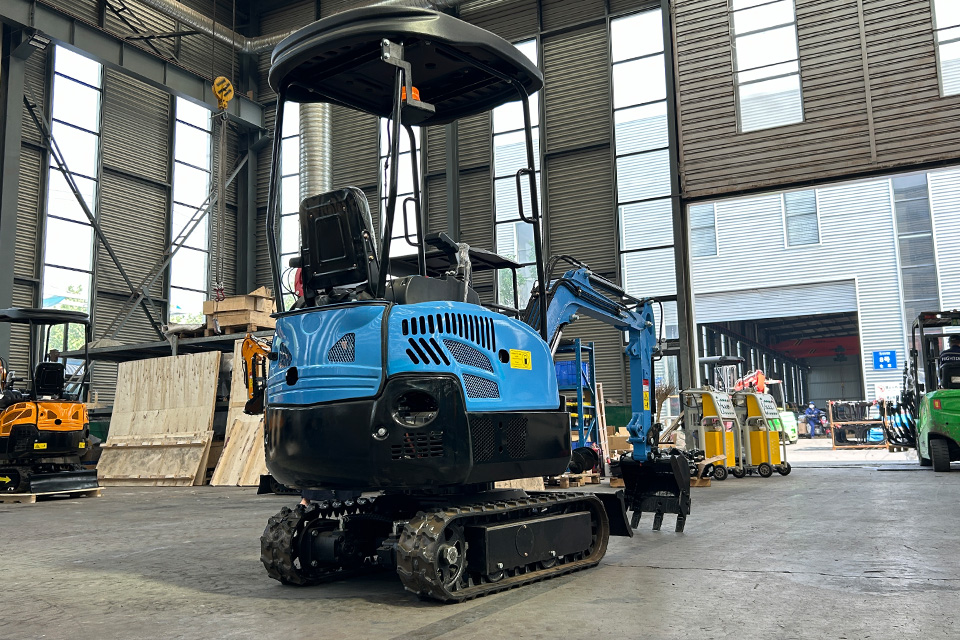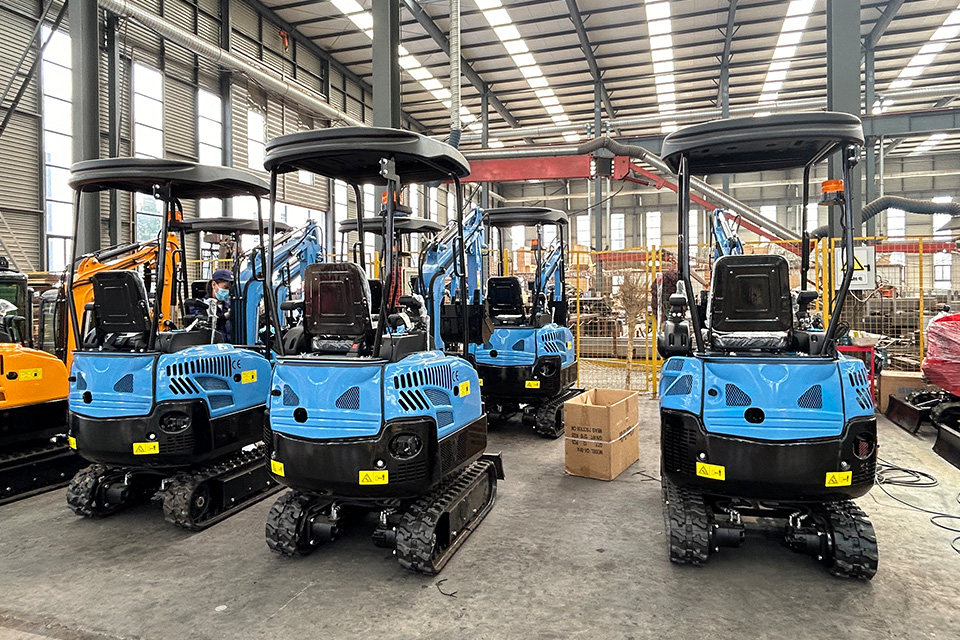Executive Summary
An excavator is a self-propelled, hydraulically-actuated earthmoving machine designed to dig, lift, and relocate bulk material. It consists of three fundamental assemblies—undercarriage, superstructure (or “house”), and front linkage (boom, stick, bucket)—and is distinguished by its 360-degree continuous slewing capability. Excavators are size-classified from <1 t “micro” units to 800 t ultra-class mining machines and are configured in three mobility types: crawler (track), wheeled, and walking (railroad) variants. Modern units integrate electro-hydraulics, telematics, and emissions-compliant engines to deliver precise, high-productivity digging across civil construction, mining, quarrying, forestry, demolition, and waste-handling applications.
Historical Evolution
1835 – Otis Steam Shovel: rail-mounted, steam-powered cable machine.
1951 – Poclain TY45: first fully hydraulic crawler excavator (France).
1973 – Nippon Steel / Kobelco: introduction of the hydraulic pilot valve for smooth control.
1996 – Hitachi ZAXIS: Tier 1 emissions-compliant engines.
2019 – Volvo Electric ECR25: battery-electric micro-excavator.
Timeline shows a shift from cable-actuated to hydraulic, from open-loop to load-sensing hydraulics, and from mechanical to electronic control.
Core Mechanical Architecture
3.1 Undercarriage
– Track or wheeled chassis supporting the machine’s weight and transmitting tractive effort.
– Components: track frames, rollers (carrier, top, bottom), idlers, drive sprockets, final drives, swing bearing.
3.2 Superstructure (“House”)
– Engine, hydraulic pumps, main control valve (MCV), operator cab, counterweight, fuel & hydraulic tanks.
– Swing ring allows 360° rotation independent of undercarriage.
3.3 Front Linkage
– Boom: typically mono-boom (general purpose) or two-piece (variable geometry).
– Stick (dipper arm): length varies from 1.5 m (micro) to 12 m (long-reach demolition).
– Bucket or tool carrier: quick-coupler or pin-on; capacity 0.01 m³ (micro) to >50 m³ (mining shovel).
3.4 Hydraulic Circuit
– Load-sensing, closed-center system with variable-displacement piston pumps.
– Relief valves set at 280–350 bar on mid-size units.
– Regenerative circuits on boom-down to save energy.

Classification Matrix
Tier Operating Weight Typical Bucket Power Application
Micro <1 t 0.01–0.05 m³ 8–15 kW Indoor demo, landscaping
Mini 1–6 t 0.04–0.3 m³ 15–45 kW Urban utilities, trenching
Midi 6–10 t 0.3–0.7 m³ 50–75 kW Road building, rental fleets
Standard 10–40 t 0.7–3 m³ 75–250 kW General construction
Large 40–90 t 3–6 m³ 250–400 kW Mass excavation, quarry
Mining >90 t 6–50 m³ 400–3000 kW Open-pit mining, heavy civil
Mobility Configurations
5.1 Crawler (Track)
– Best flotation and traction; steel or rubber tracks.
– Drawback: slower travel (≤5 km/h) and higher ground pressure on hard surfaces.
5.2 Wheeled
– Rubber tires; faster road travel (20–40 km/h).
– Ideal for urban jobs with frequent repositioning.
5.3 Walking / Rail / Spider
– Specialized for railroad maintenance, steep slopes, or swamp mats.
– Rubber-pad or steel-pad walking mechanisms distribute load over large pads.
Powertrain Technology
6.1 Diesel Tier 4 Final / Stage V
– SCR + DPF + EGR to meet 0.4 g/kWh NOx and 4.0 mg/kWh PM.
6.2 Hybrid
– Engine + electric swing motor + super-capacitor (e.g., Komatsu HB365).
– Fuel saving 20–30 % on duty cycles with high swing energy.
6.3 Battery-Electric
– 400–600 V lithium-iron-phosphate packs; 50–300 kWh.
– Zero tailpipe emissions; quieter <75 dB(A) at operator ear.
6.4 Hydrogen Fuel-Cell
– Emerging prototypes (JCB, H2CE) with 20 kW stacks + buffer battery.
Control & Automation
7.1 Joystick Pilot Control
– Electro-hydraulic joysticks with proportional valves and force-feedback.
7.2 Grade Control & Machine Control
– GNSS + IMU + laser or total-station for ±2 cm 3D digging accuracy.
7.3 Telematics & IoT
– Engine hours, fuel burn, geo-fencing, predictive maintenance alerts.
7.4 Semi-Autonomous
– Remote-control operation via tablet (E.g., Built Robotics retrofit).
Attachments & Versatility
Attachment Function Typical Flow Example OEM
Hydraulic Breaker Rock / concrete demolition 120–200 L/min Atlas Copco SBU220
Auger Drilling holes 80–180 L/min Eijkelkamp 250 mm
Tilt-rotator 360° rotation + tilt 120 L/min Steelwrist G2
Grapple Handling logs / scrap 80–150 L/min Kinshofer HPX
Compactor Plate Vibratory soil compaction 60–100 L/min JCB Vibromax
Quick Coupler 5-second tool change – Lehnhoff MS03

Application Domains
9.1 Construction
– Foundation digging, trenching, site preparation, demolition.
9.2 Mining & Quarrying
– Overburden removal, ore loading, haul-road maintenance.
9.3 Forestry
– Road building, log loading, stump removal.
9.4 Waste & Recycling
– Sorting, loading shredders, landfill cell preparation.
9.5 Utilities & Telecommunications
– Cable trenching, pole-hole drilling, pipeline installation.
Safety & Regulatory Compliance
ROPS/FOPS certified cabins (ISO 3471 / ISO 3449).
360° cameras, object detection radar, swing alarm.
Operator-presence seat switch, hydraulic lockouts.
Daily pre-start checklist: tracks, hydraulics, grease points, engine fluids.
Maintenance & Lifecycle Economics
Engine oil 500 h (Tier 4) vs 250 h (Tier 3).
Hydraulic filter 1,000 h; swing bearing grease 250 h.
Total Cost of Ownership (TCO) model: fuel 30 %, depreciation 25 %, maintenance 20 %, operator 15 %, insurance 10 %.
Future Outlook
Zero-emission mandates: Paris-aligned fleets → 50 % electric by 2035.
Hydrogen infrastructure: green H₂ ports for large mining shovels.
Autonomous fleets: tele-remote + AI path-planning for repetitive cut-and-fill cycles.
Digital twins: real-time wear analytics, predictive parts ordering.
Key Takeaways
An excavator is a high-precision, high-force material handler whose design has evolved from steam shovels to electric-hydraulic, data-connected workhorses. Correct sizing, attachment selection, and adherence to safety/maintenance protocols are critical for maximizing productivity and minimizing total cost of ownership.
Post time:Sep-25-2020
